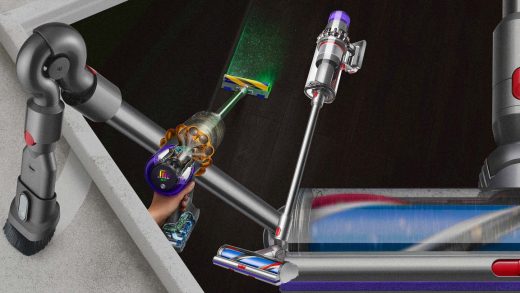Dyson’s latest vacuum shoots green laser beams
Vacuums with laser beams. Perhaps it sounds like an Austin Powers gag. But this time, it’s another Brit leading the charge. Sir James Dyson.
I’m using a prototype of Dyson’s latest flagship cordless stick vacuum, its V15 Detect ($700 on March 24). On the back, I see a graph that’s basically a Fitbit for cleaning. A colorful bar chart conveys how many millions of microscopic particles I’ve sucked up, along with larger particles like food scraps. And on the front is that unmistakable green laser. It fires off from the brush head like some gadget from a Mission Impossible film, illuminating otherwise invisible specks for me to vacuum.
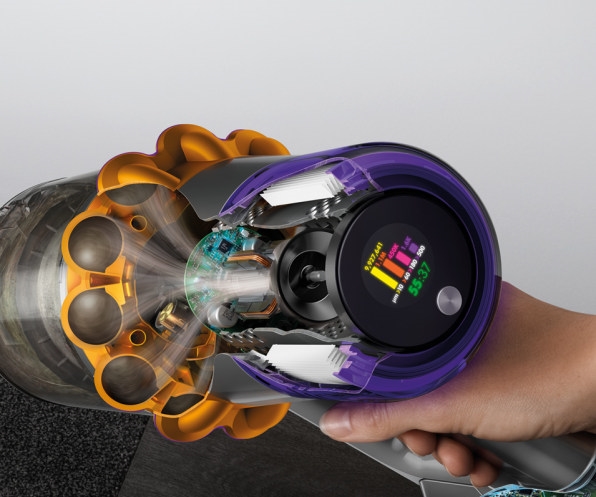
These technologies should be cheesy in a world where poised and pared back products are king. I mean, c’mon, we’re literally talking about vacuums with laser beams! But 2020 changed me, and it changed a lot of us. I didn’t know how much that was true until the Dyson team first demonstrated its upcoming line of vacuums and air purifiers, and I found myself not just interested, but literally getting an adrenaline rush through the Zoom window. I was cheering them on in my head, “YEAH, YOU GET THAT COVID, DYSON! MESS UP THAT COVID! YOU WENT TOO FAR THIS TIME, SARS-CoV-2 VIRUS! YOU SHOULD NEVER HAVE PISSED DYSON OFF!”
Dyson has a unique chance to demonstrate its value to consumers, and quantify the experience of cleaning as never before. Revenue was up 23% in 2019, and Dyson tells Fast Company that its 2020 numbers (yet to be reported) will be even better as COVID renewed our focus on health and hygiene.
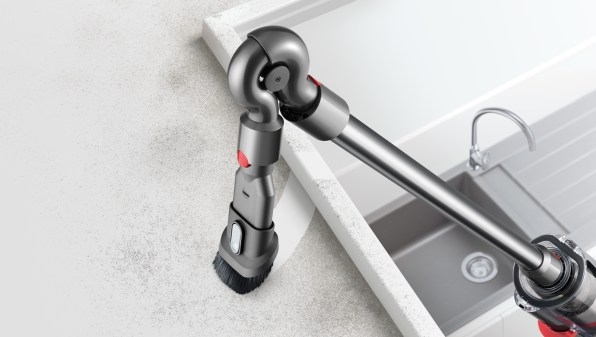
So in 2021, Dyson will launch more products than at any time in the company’s 29-year history, including nine products coming over the next two months. They have an unprecedented suite of sensors to visualize and quantify your cleaning. On top of that, the company will continue opening brick and mortar Dyson Demo Stores, adding 25 new stores to expand its worldwide footprint by roughly 10%.
“We are doing a slightly counter culture thing,” says Dyson founder and chief engineer James Dyson. “Whilst stores are closing down, we’re actually opening them up. Because I think if we’re providing new technology people want to see if it’s worth it and what it does. We need a place where we can show that and actually demonstrate it to them.”
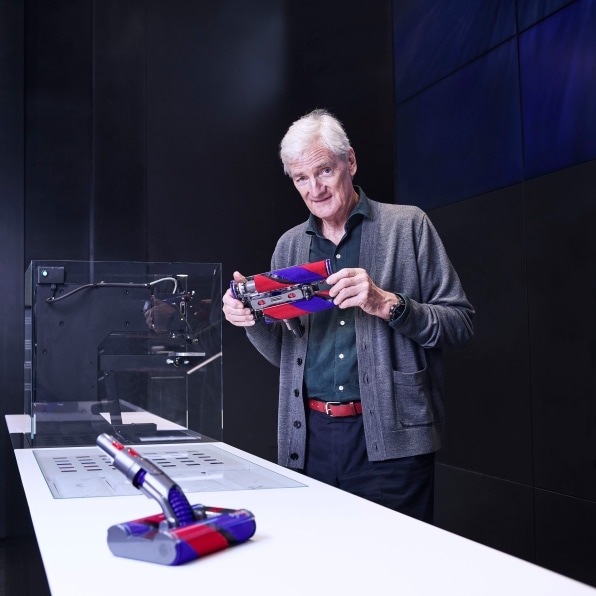
The UX of cleaning
James Dyson is the first to admit that he doesn’t expect you to be as passionate about a vacuum cleaner or an air purifier as you would be about a surfboard or a pair of skis. “I’ve always said we tend to choose prosaic products, that people don’t really [care about],” says Dyson. “They’re commodity products. There’s no enthusiasm about their manufacture.”
But he also knows that, in focusing on these otherwise forgotten products in a downright overzealous manner, his company is able to distinguish itself in the category. Dyson claims to do this through an engineering-led, rather than design-led company. It’s Dyson’s inventors who decide what the company will release next. But the truth is, Dyson has still been focused on the UX of cleaning for years. Dyson himself points to how his company was the first to introduce the clear bin in a vacuum cleaner, which suddenly quantified how much dust a person had sucked up.
“The thing I’ve observed with people and vacuum cleaners…[is] when you vacuum you don’t know what you’re doing,” says Dyson. “We introduced the idea that you’ve got a clear bin and you can see what you picked up.” The problem is, you have no idea what you’ve left behind.
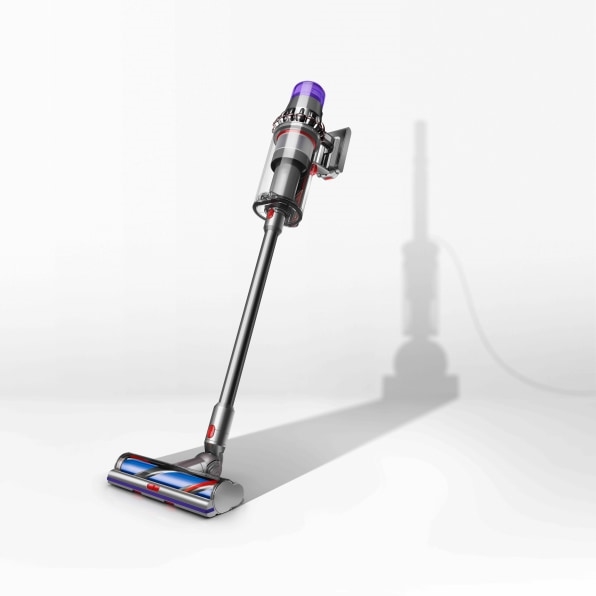
Indeed, there’s not much of a feedback loop to cleaning your home. We rely on the patterns we brush into a carpet, or the smell of cleaning supplies, or the sheen of a countertop to determine something is “clean.” These are the softer messages driven by human instincts rather than anything particularly quantifiable.
The V15 vacuum is a direct response to fix the UX of cleaning. It now has a display on its handle that tracks the particles you’ve sucked up in real time. The idea is that, if you’re vacuuming a rug, you know that it’s clean once most of this bar chart stops filling up.
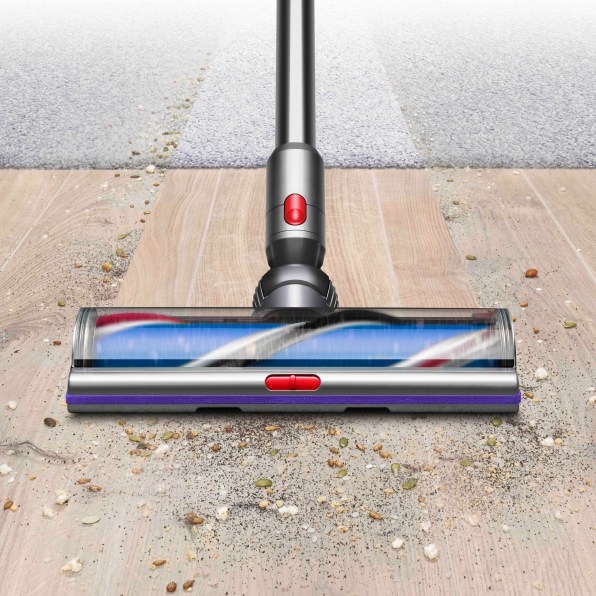
As Dyson explains, when his company was just a startup, he flew to Minnesota, wondering if he could acquire a sensor to track the presence of micron-sized particles to verify the quality of his vacuums. For $300,000, this lab equipment was out of his reach.
Years later, his company was successful enough to acquire many such systems. But engineers wondered how that validation could be built into the product itself. What Dyson developed was a piezoelectric sensor. It’s a chip that can measure vibrations, like sound waves, and so it actually listens to the particles bouncing around in the machine to determine their size and count. As larger particles begin to fly in, the vacuum’s motor automatically ramps up, consuming more energy to lift them through the pipe.
It’s more than a little wild that, as you vacuum, you can literally watch the count of particles suck into the vacuum. That includes items ranging from less than 500 microns, like pollen; items less than 180 microns, like a human hair; and even items under 10 microns in size, which brings you down to the world of dust and bacteria. You can literally vacuum up tens of millions of the tiniest objects in a single cleaning session.
In practice, I actually used this Skittles-colored bar chart less than I expected. I’m not sure why. Perhaps it’s just not the perfect visualization to make cleaning feel as addictive as I’d hoped it would. Perhaps the scale of tens of millions of particles just overwhelms my pea brain. But in any case, it was still validating that my work had a measurable impact.
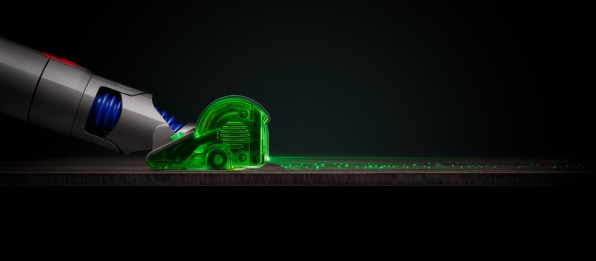
I was more impressed by another new feature on the V15, the laser, which is built into a soft brush head made for cleaning hard floors. This laser is green (the color accentuates contrast more than red), and to function properly, it’s positioned at a precise, 1.5-degree angle and lifted 7.2mm off the ground. I know. I thought it was a joke, too. That was until I tried the vacuum on my cork flooring. The pockmarked finish has the benefit of always looking clean. But shining the light revealed huge piles of dust where I didn’t even know they were—and the dust isn’t just flat, but textured, with dynamic shadows you can’t miss. The whole experience reminded me of one of those news specials where the host visits a motel room and shines it with blacklight. Just what kind of dust slob am I?!?
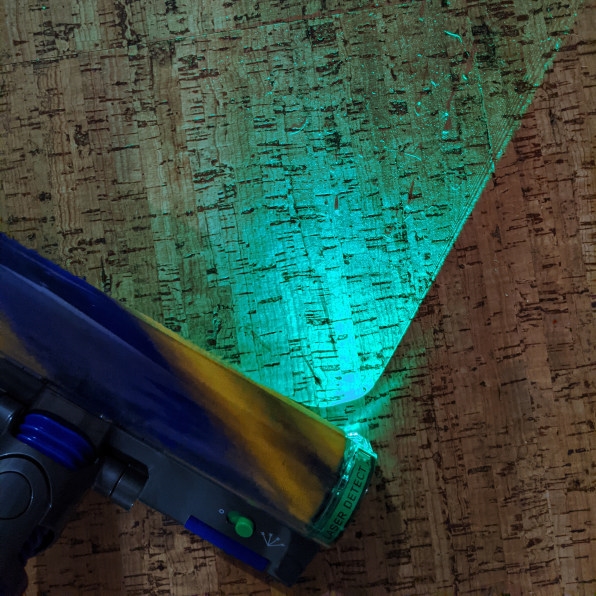
“We’re showing them what they’re doing, the effect it’s having,” says Dyson. “I hope it’ll make [vacuuming] more satisfying, less worrying, and more interesting.”
It sounds silly, but now I never want to vacuum without a laser again. I wish the laser could reach even further across my whole floor rather than a few inches, and also that it was integrated with of all of Dyson’s brush heads (including a really wild looking new brush head on the Omni-glide vacuum, that runs on four wheels, so it can spin 360-degrees in any direction or corner you want). To vacuum without the laser fills me with a sudden insecurity, almost like driving somewhere without my trusty smartphone GPS. Where did I even vacuum before I could see all the dust?
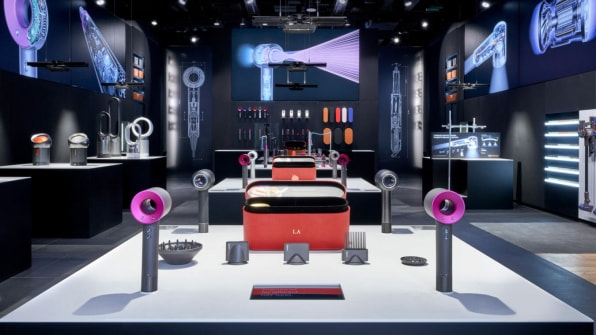
The moment for retail expansion
You can see Dyson’s ambitions in its aggressive product release schedule. Three vacuums (including the aforementioned V15 Detect and Omni-glide, along with a larger vacuum dubbed the Outsize) arrive March 24. Then a slew of new and updated air purifiers, including a pair that can measure formaldehyde in the air (which is commonly off-gassed from flooring and carpets). The company is also focusing at an unprecedented level on commercial-grade purifiers, beefing up its technology for businesses looking to reopen.
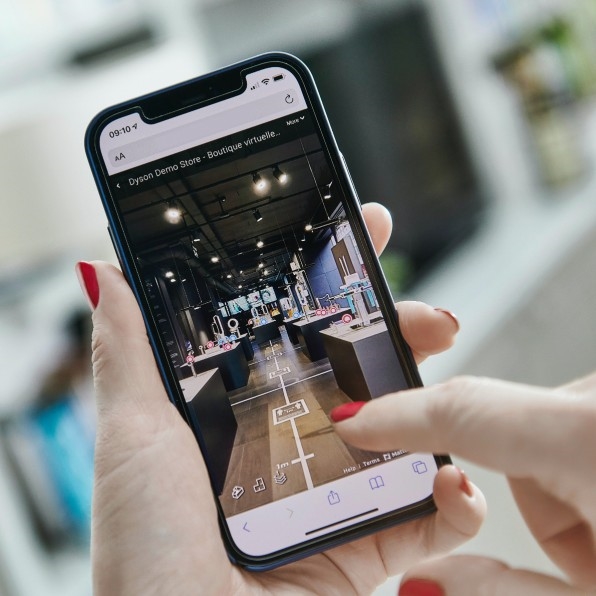
Beyond simply releasing more products, the company is rethinking how it sells those products. Which is why Dyson is so interested in direct-to-consumer sales. That strategy includes its 230 stores that will be open across the globe by the end of 2021, the option to “tour” these stores virtually online, and new AR filters to simulate having a Dyson product in your house.
Selling a product directly means that a retailer doesn’t take a cut of Dyson’s transaction, which boosts revenue. However, James Dyson is also excited about possibilities it opens up for for the company’s relationship with consumers—who are a black box if someone buys their products on platforms like Amazon, where the company will continue to stock products.
“Buying from the manufacturer is almost buying locally, back almost to medieval times when you bought your implements and things from a local maker,” says Dyson. “You got your horse shoed at a local blacksmith.”
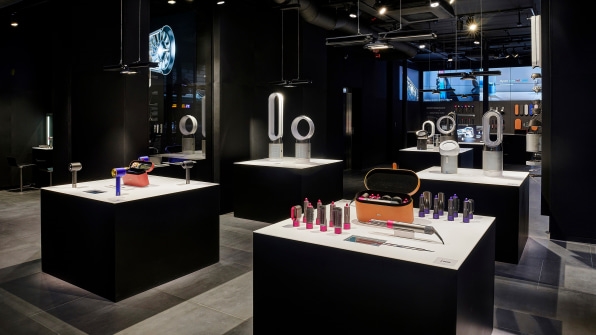
On one hand, that claim is certainly a stretch for any global company. But on the other, Dyson does plan to do business differently, and more personally, with its customers. It can offer more customization when you order its products directly (it’s easy to imagine swapping various attachments). And with connected chips, it has the potential to better understand how customers are using its products.
“If we’re able to know what their machine is doing, we can make improvements and better machines in the future,” says Dyson. “Of course, there’s a Big Brother element to it we need to be very careful of. But for the things people don’t mind us doing, we can create better products.”
It’s a fine line to walk. No one wants to have to download a firmware update just to vacuum their living room. Furthermore, no one wants to make cleaning a lifestyle, with some app that’s always encouraging them to clean. Yet, if Dyson could, say, increase the battery life of a vacuum with software after you bought it, that would be a big benefit. If it could tell that you never actually used that corner attachment, perhaps it would be replaced in future vacuums, which could be an indirect benefit to consumers, too.
In any case, it’s clear that Dyson is strategizing much like Apple did in 2001, by opening flagship stores to demonstrate the value of its products and curate that consumer experience end-to-end.
“I’d be really worried if I was a retailer,” says Dyson. “How does a retailer compete with that?”
(8)

